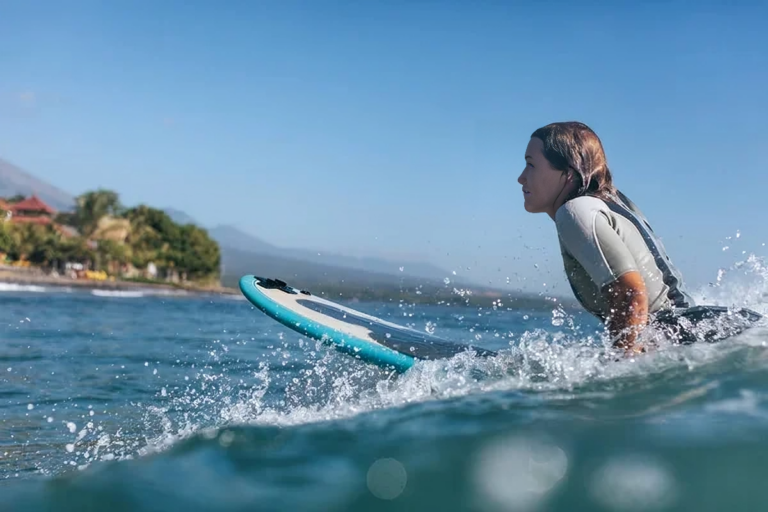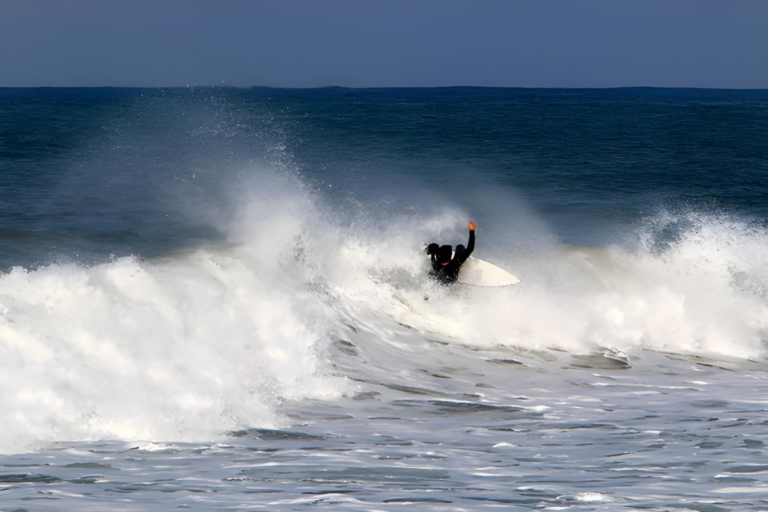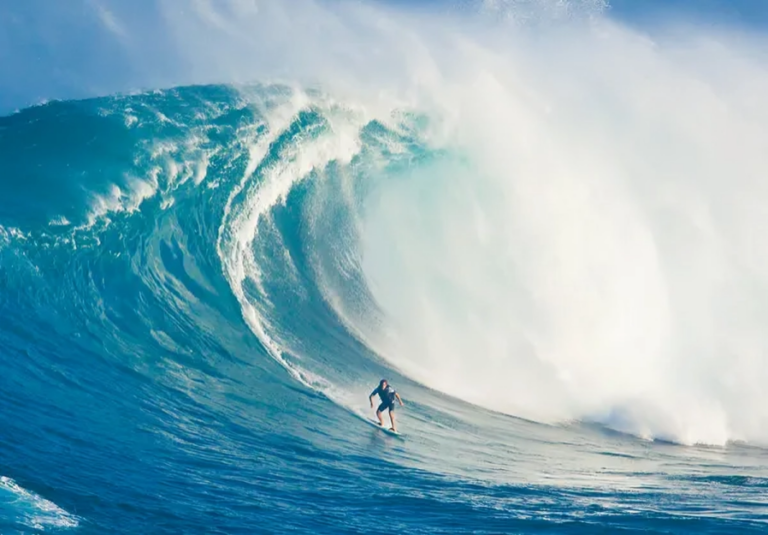Dog Surfing: A Fun and Unique Adventure for You and Your Furry Friend
What comes to your mind when you hear the word surfing, people on boards and beautiful sun on the shore. But imagine if the companion of your four-legged friend could make this thrilling adventure possible? Well, yes, you have heard it right, dog surfing is real and has already found its way to becoming a trend among dogs and their owners.
In the following article, we will look closer at Dog Surfing and how to begin; what types of dogs are best suited for this pastime; equipment; training and many other facts and information that would be very helpful in surfing with your dog.
No matter if you are an advanced surfer, or if you have never stepped on a surfboard in your life, by the time you’re done reading this guide, you will be prepared to bring your dog along for the ride.
What is Dog Surfing?

Dog surfing is exactly what it sounds like: surfing dogs which usually perform stunts of riding waves on a surfboard sometimes accompanied by their masters. This sport is not just a great way to have fun together with your dog, to help him become more muscular and to start getting used to different terrains.
Dog surfing competitions are even carried out in different places annually and people gather to watch and appreciate the wonderful talents of these wonderful dogs.
How to Get Started with Dog Surfing
1. Choose the Right Beach
If you plan to swim with your dog, also ensure that the beach you select accepts dogs and has conditions that support surfing. Mild waves should be the kind of beaches to visit, you will need to take your dog into shallow waters initially so that he or she gets acquainted with the board.
The ocean may seem scary to some of the dogs initially, therefore, it is recommended that the owner take the dog to an area that has not so big waves.
2. Select the Right Surfboard
Not all surfboards will fit this new purpose of dog surfing. Ideally you should opt for a broad board so that your dog can navigate with ease and ensure he or she does not fall off.
A foam top board should be used for beginners as it offers more traction for your dog’s paws and they reduce the risks of injuries in case they fall off.
3. Start with Basic Training
Before your dog get involved in surfing then it should not mind being on a surfboard. Begin on solid ground by positioning your dog on the board and then commanding him or her to stay.
In this session, you ought to take a bottle of treats and accord your dog a round of praise when it regains balance or simply sits still on the board. But with all of this, they should feel comfortable and practice in shallow water once they are out of the water.
Best Breeds for Dog Surfing
Though, quite logically, most dogs can learn to surf, there are some breeds that will be better fitted to do so. Here are some of the best breeds for dog surfing:
- Labrador Retrievers: These kinds of dogs are typically water lovers, always full of energy, very strong and excellent swimmers, hence this makes them preferred athletes for dog surfing.
- Golden Retrievers: Like Labs, Golden Retrievers are genetically inclined to handle water incidents, and they are composed and ‘bright.’
- Australian Shepherds: Intelligent and energetic Australian Shepherds are always capable of participating in different dog’s sports including surfing.
- Border Collies: These dogs are so well balanced and well coordinated that they are ideal surfing dogs.
- Terriers: Some of the terriers are small in size but many of them have a rather bold demeanor and a good deal of body sway that makes them suitable for surfing.
Training Tips for Dog Surfing
Socialization and obedience training with your dog to the extent of surfing will require a lot of time and patience. Here are a few training tips to help your furry friend become a surfing pro:
1. Start with Confidence Building
The sea can be daunting especially for dogs who have little or no encounter with water bodies. Make your dog get acquainted with water slowly especially if you intend to take your dog swimming when it can stand. Let them swim as they want in the water, and don’t pressure them into going into water.
2. Balance and Stability Training
Depending on the size and breed of your dog, he or she will have to learn the basics of balance just to be able to stand on the surfboard. Prepare the activities on land in the beginning; teach the dog to jump on and off the board with the board not in operation.
As soon they become more familiar, you can try tilting the board slightly in the direction of water movement. It is also important to positively reinforce your dog in order for him/her to learn how to maintain the balance on the surfboard.
3. Introduce Waves Slowly
After some time, your dog is familiar with the board and swimming in the shallow water, it is now the time to introduce small waves. It is recommended to start using gentle swells at first this will help your dog feel comfortable with the situation.
Lastly, never forget to reward your children with a lot of encouragement and of course analyze treats should they make it through riding the wave!
4. Use Positive Reinforcement
Reward is important when training your dog to surf. It is good to always make sure to give them a treat, praise and playtime each time you finish the session. They need to maintain the belief that surfing is a good thing so this will help keep them trying.
Essential Gear for Dog Surfing
Effective dog surfing gear are, therefore, mandatory if you want to avoid straining your dog and making him/her uncomfortable during the event. Here’s what you’ll need:
- Dog Life Jacket: Still, the statements prove that safety should always remain the top priority. Also, it’s noteworthy to state that even if your dog loves water and can swim perfectly, a life jacket is needed. In case your dog falls off the board it will support them and can also assist in pulling them back on the board.
- Surfboard with Good Traction: Another preferable type of surfboard for dog surfing is the foam or so-called soft-top surfboard because it guarantees more successful paw adherence.
- Leash: It is possible to hear some dog surfers advising others to use a leash as a way of ensuring that the dog stays near the surfboard though this may be in case the dog slips off the board. However, one must ensure that Rope is short enough to avoid tangling on it when walking the dog.
- Waterproof Treat Pouch: Of course, it’s always good to have snacks handy during training so that your dog can be rewarded throughout surfing lessons. This is well made possible by a waterproof treat pouch.
Dog Surfing Competitions and Events
Planning for dog surfing is fun but if you see you and your dog are taking it to the next level in terms of seriousness then why not try joining a surfing competition for dogs.
Such competitions are organized in the world’s favorite surfing zones and are devoted to the bright performances of remarkable water dogs. Here are a few notable competitions:
- Surf City Surf Dog: An international contest held annually in Huntington beach California where these dog surfers assemble. One of the interesting spectacles that the event has is the different heats set according to the size and ability of the dog.
- The Loews Coronado Bay Resort Surf Dog Competition: This is also another famous competition held in California and is characterized with big events like festivals and more astonishing displays of dog surfing.
- Pawz Dog Boots Dog Surfing Contest: This event is held in the U. K. and aims at gathering dog surfers that would perform their stunts in a more laid-back competition.
Benefits of Dog Surfing

Dog surfing offers a range of physical and mental benefits for both you and your dog. Here are a few reasons why you should give it a try:
- Physical Exercise: Surfing provides a full-body workout for your dog, improving their strength, agility, and stamina.
- Mental Stimulation: The challenge of balancing on a board and riding waves keeps your dog mentally engaged, helping to ward off boredom.
- Bonding Opportunity: Surfing together strengthens the bond between you and your dog as you learn to trust and rely on one another in the water.
- Confidence Building: For shy or anxious dogs, surfing can help boost their confidence by exposing them to new experiences in a controlled, positive way.
Safety Considerations for Dog Surfing
It’s rather interesting to watch dogs surfing but one should understand that it is almost impossible to ensure the animal’s safety. Here are a few key safety considerations:
1. Watch the Waves
In addition to this, wave conditions should always be monitored. Seas with big waves or waves that are irregular in size can be disastrous for dogs particularly those that are still learning.
Avoid large waves when teaching your dog how to swim as you want him/her to have a good start in the water.
2. Know Your Dog’s Limits
I have tried to popularize the misconceptions also but I would like to state that not all dogs will like surfing and that is absolutely fine. The charm of water activities is also that every dog can be carefully introduced to water if one adheres to the dog’s body language and does not insist on making him go into the water.
3. Keep Sessions Short
Like in any other form of physical exercise, it can also be exhausting for dogs, just like when riding a surfboard as what you see in the video below. Limit the period of time that your dog spends in the water and swim in short intervals to avoid your pet from getting too exhausted.
Conclusion
Dog surfing is definitely an additional interesting way of spending time with your four-legged friend and let sns introduce him to the sea.
It is a fun activity, be it for an individual seeking a new venture or someone in it for the thrill of entering a contest or just to have a jolly good time at the beach with his or her dog. With the proper training coupled with the proper equipment you will be soon telling your dog to ride the waves!
Do not waste your time and start today to make some great and unique moments with your four-legged friend in the sea!
If you have any questions about dog training, check this website: https://dogtraininggeek.com/



